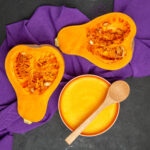Sudan, a country nestled in Northeast Africa, boasts a rich cultural tapestry that extends to its diverse and tantalizing cuisine. Sudanese food reflects the country’s historical influences from Arab, African, and Middle Eastern traditions, resulting in a unique blend of flavors and ingredients. In this article, we delve into the top 10 most eaten foods in Sudan, offering a glimpse into the country’s culinary heritage and the dishes that have become beloved staples among Sudanese people.
- Ful Medames: Considered Sudan’s national dish, ful medames is a hearty and nutritious breakfast dish made from cooked fava beans. The beans are typically simmered with garlic, onions, and a medley of spices, then topped with olive oil, lemon juice, and garnished with fresh herbs. Served with flatbread or bread rolls, this dish provides a delicious and satisfying start to the day.
- Kisra: Kisra is a traditional Sudanese flatbread made from fermented sorghum flour. This gluten-free bread is a staple in Sudanese cuisine and is often enjoyed with various stews, curries, or as a base for wraps. Its slightly tangy flavor and soft texture make it a versatile accompaniment to many Sudanese dishes.
- Aseeda: Aseeda is a popular Sudanese dessert that also doubles as a filling breakfast or a comforting snack. Made from cooked wheat flour or cornmeal, it has a thick and sticky consistency similar to a porridge. It is typically sweetened with honey or topped with a rich sesame oil and served with a variety of dips or sauces.
- Kabab and Shaiyah: Kabab and shaiyah are a classic combination in Sudanese cuisine. Kabab refers to succulent grilled meat skewers, often made with beef or lamb, marinated in a blend of aromatic spices. Shaiyah, on the other hand, is a flavorful tomato-based stew enriched with meat, okra, and various vegetables. Together, they create a delicious and satisfying meal.
- Kofta: Kofta is a beloved dish in Sudan, consisting of ground meat, typically beef or lamb, mixed with onions, herbs, and spices. These meatballs are either grilled or pan-fried, resulting in a juicy and flavorful delicacy. Kofta is often served with rice, bread, or in sandwiches, and is a favorite street food option.
- Mulukhiyah: Mulukhiyah is a popular Sudanese stew made from the leaves of the jute plant. The leaves are finely chopped and cooked with meat, typically chicken or lamb, creating a thick and nutritious dish. Mulukhiyah is often served with Sudanese bread and provides a comforting and flavorsome meal.
- Bamia: Bamia, also known as okra or lady’s fingers, is a staple ingredient in Sudanese cuisine. The tender okra pods are cooked in a tomato-based stew, seasoned with spices and aromatics, and often combined with meat or seafood. This hearty and flavorful dish pairs well with rice or bread.
- Masara: Masara is a Sudanese dish made from dried fish, usually Nile perch, that is cooked with a blend of spices, onions, and tomatoes. The dish is slow-cooked to perfection, allowing the flavors to meld and the fish to become tender. Masara is typically served with Sudanese bread or rice.
- Shorba: Shorba, or Sudanese soup, is a comforting and nourishing dish commonly enjoyed during Ramadan or as a starter for special occasions. It typically features a hearty broth flavored with meat, lentils, vegetables, and an array of aromatic spices. Shorba is often served with bread and provides a satisfying start to a meal.
- Sudanese Tea: No culinary journey through Sudan is complete without a mention of Sudanese tea, a popular and ubiquitous beverage. Sudanese tea is a strong black tea brewed with a combination of spices, such as cinnamon, cardamom, and ginger, and sweetened with sugar. It is often served hot and accompanied by snacks or desserts.
Sudanese cuisine offers a rich tapestry of flavors, reflecting the country’s diverse cultural heritage. From the protein-packed ful medames and the versatile kisra to the comforting aseeda and the flavorsome kabab and shaiyah, the top 10 most eaten foods in Sudan represent the essence of Sudanese culinary traditions. Exploring these delightful dishes allows one to savor the unique blend of ingredients, spices, and regional specialties that make Sudanese cuisine a truly captivating and delicious experience.








